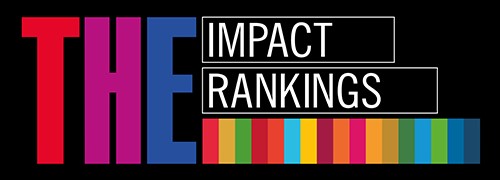Support materials and continuing education for academic staff
Materials for academic staff
Methodological materials
Experts at the Centre for Educational Growth have developed a diverse range of methodological materials to support academic staff in planning, managing, and evaluating the study process, as well as adapting it to evolving trends in higher education. These guidelines, handbooks, infographics, and training videos—created by both internal and external educational experts—offer practical solutions for academic staff. The materials are designed to enhance the quality of education and foster greater student engagement in achieving learning outcomes.
- Study material repository
The Rīga Stradiņš University Study Material Repository is a structured digital platform where the Centre for Educational Growth uploads educational resources to support teaching. It includes a wide range of guidelines, handbooks, infographics, training videos, and links to courses.
Academic staff can find up-to-date content under "Support materials for academic staff", which includes several collections:
- Academic integrity
- Creating digital study materials
- Learning and teaching
- Course design
- Assessment
Visit the RSU study material repository to explore these resources.
- Support for blended learning
The Centre for Educational Growth has developed an e-learning course ‘’Support for blended learning’’, which includes materials on:
- Organising hybrid classes
- Organising remote learning
- Creating an e-learning course
- Delivering online lectures and classes
- Organising remote examinations
- Providing feedback
- Academic staff experience stories
Access the course: Support for blended learning.
- Development of learning outcomes and course descriptions
Course descriptions outline the nature and content of a study programme. RSU aims to support both academic staff and students in using course descriptions as a roadmap for completing a course.
At RSU, course descriptions are overseen by the Study Programme Administration Unit within the Academic Affairs Department.
Resources for academic staff:
- Glossary of student-centred learning and teaching
This glossary is based on a student-centred learning and teaching approach. It includes key concepts that support the implementation of a student-centred study process and explain essential aspects of daily pedagogical work at Rīga Stradiņš University.
The glossary aims to establish a shared understanding of learning and teaching terminology and to promote a unified pedagogical language at RSU.
Access the glossary: Glossary of pedagogical terms in Latvian
- Artificial intelligence in higher education
Artificial intelligence has become an integral part of both the social and educational environment, particularly as generative AI has become a widely accessible tool for anyone with internet access.
Experts from the RSU Centre for Educational Growth have developed AI guidelines that outline the approach to using artificial intelligence in the study process. These guidelines are based on insights from educational researchers, best practices from leading universities worldwide, and RSU’s own pedagogical experience.
Access the guidelines: Artificial Intelligence in Higher Education
Artificial intelligence and academic integrity: A worksheet for academic staff reflection
The Artificial Intelligence and Academic Integrity reflection worksheet is designed to encourage a thoughtful and ethical approach to the use of AI in the study process.
This worksheet presents various AI usage scenarios, enabling academic staff to evaluate when and how the use of tools such as ChatGPT may be appropriate or inappropriate in different teaching and learning contexts. It serves as a resource to help educators understand how AI can be a valuable support tool while maintaining academic integrity and study quality.
Access the worksheet: Artificial intelligence and academic integrity worksheet
- Study organisation format selection tool
Study organisation formats provide opportunities for collaboration in learning and teaching, either in person or online. These can be:
- Synchronous – where everyone participates together at the same time and place.
- Asynchronous – where each person works at their own time, place, and pace.
A combination of synchronous and asynchronous, in-person and online learning activities within a single course is referred to as blended learning.
To support the selection of appropriate study formats for your course, we offer a tool to help determine the most suitable study organisation formats.
Explore the tool: Study format selection tool in Latvian
- Academic Integrity
This support material is designed to help lecturers and students understand and address academic integrity issues. It is adaptable and can be used in various ways and contexts.
Explore the resource: Academic integrity: Case method for use in student and academic staff groups (in Latvian)
Digital tools for organising the study proces
Digital tools are essential in learning as they promote student engagement, active learning, and self-directed study, both online and on-site. The tools are categorised into three groups based on their usefulness:
- Tools for collaboration: These encourage students to work together in groups and discussions, fostering participation and reflection on their own knowledge.
- Tools for self-directed learning: These help students organise and test their knowledge independently.
- Tools for creating visual materials: These inspire creativity in the development of research papers.
Digital polling tools

Mentimeter is a presentation tool designed for both synchronous and asynchronous online learning. Unlike Microsoft PowerPoint or Google Slides, Mentimeter allows academic staff to actively collaborate with students during an online class. It offers a variety of features such as quizzes, polls, word clouds, and more, enabling students to vote, express their thoughts, and answer questions in real-time.
Through this interactive approach, academic staff can gain valuable insights into students' thoughts and experiences, summarise ideas, and highlight the most relevant aspects of the topic. This active and engaging learning process helps maintain students' attention and encourages them to reflect on their own knowledge and experiences.
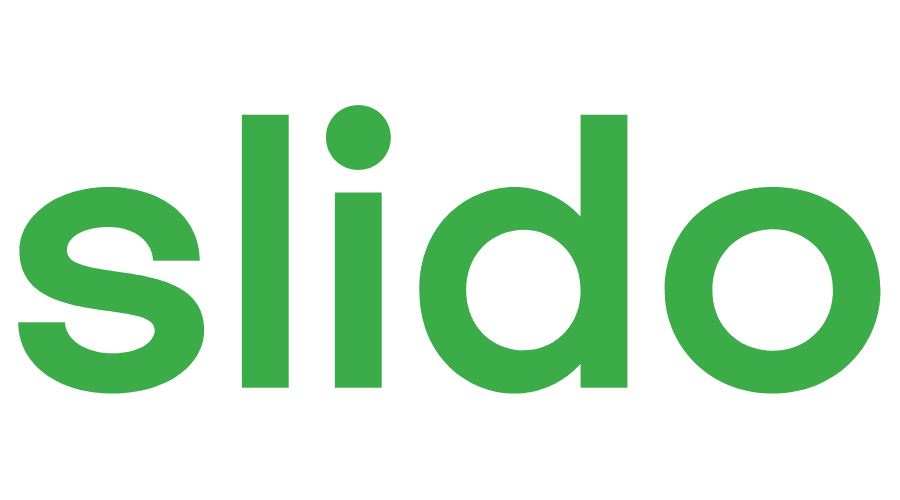
Slido is an interactive platform that promotes active student participation through real-time polls, quizzes, and Q&A sessions. The use of such interactive tools encourages student engagement, helps assess the development of understanding, and strengthens collaboration between students and lecturers.
While the free version has limited functionality, the basic licence still allows for effective use during lectures.
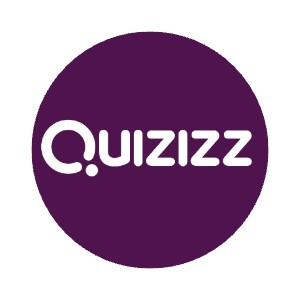
Quizizz is an interactive platform for creating engaging presentations that promote active learning during lectures. It allows academic staff to create slides that capture students' attention by asking questions, recalling previous experiences, or solving problems. In addition, entire presentations can be created on the platform.
The paid version enables the embedding of existing presentations into your Quizizz presentation. By viewing students' opinions and answers during the lecture, academic staff can monitor progress and provide immediate feedback.
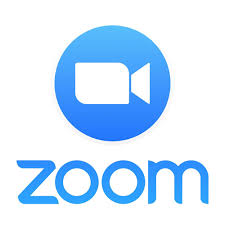
For synchronous online lectures on the Zoom platform, the Zoom Polls feature allows academic staff to easily capture and aggregate students' opinions, experiences, and knowledge. A wide range of question types are available, including multiple choice, matching, rank order, fill-in-the-blank, and both short and long answers, with no restrictions on usage.
Digital tools for remote learning

Miro provides an online interactive whiteboard designed for group work and peer learning during classes. Its versatile functionality and application possibilities make it an excellent tool for collaborative tasks. The platform allows users to work together on ideas and present them later. Different types of frames can be used to separate working areas for student groups or individual tasks. Miro also offers many pre-designed frame templates, which academic staff can adapt to their class schedule and objectives. Students and academic staff can comment on each other's content and provide feedback during assignments. Sticky notes, texts, files, links, images, and task lists can be posted on the board, and the results can be shared with up to 100 participants.
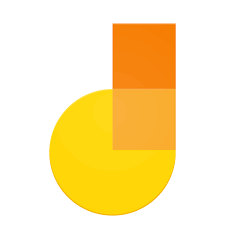
Jamboard is a Google tool that allows users to creatively organise, format, and present information using text, images, shapes, and drawings. As a digital whiteboard, Jamboard enables collaboration in on-site, online, synchronous, and asynchronous learning environments. Up to 50 users can collaborate simultaneously on a single Jamboard worksheet. The tool encourages students to actively participate in the learning process by visually displaying their individual or group reflections and ideas. It also gives academic staff the opportunity to track students' work, gaining insight into what they have learned and identifying areas of the topic that may need further attention.

Kialo Edu is a free platform specifically designed for academic staff to engage students in thoughtful online discussions and debates, with access restricted to a specific group of students. Academic staff can organise students into teams to research, plan, and develop their ideas collaboratively. Students can join a discussion or debate without needing to register. During the discussion, students present their arguments (for or against the topic) and respond to each other’s points or add new insights. Academic staff can moderate the discussion and provide feedback on students' ideas, the structure of their arguments, and the quality of their research.
Digital tools for self-directed learning

Brainscape is a digital tool that enables students to create and use flashcards to reinforce their knowledge of specific facts. Students read a question on one side of the card and click to reveal the answer on the other side. After each question, students rate how well they knew the answer: a higher score means the same card will appear less frequently, while a lower score results in more frequent repetition. Learning progress is displayed through interactive graphics.
Academic staff can create sets of flashcards relevant to the topic or study course, or use one of the over one million sets already created by others. Students are also encouraged to create their own sets of flashcards for the most relevant and important topics in the course.
The free version allows academic staff to create a public group for their students and develop sets of cards accessible to all. The paid version enables the creation of private card sets and tracking of students' progress.
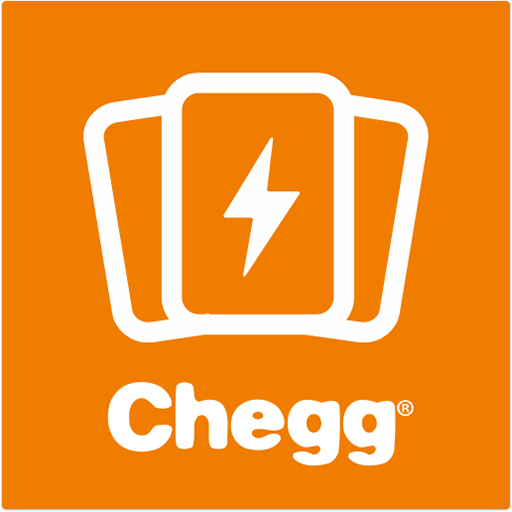
Chegg Flashcards is a flashcard creation and sharing tool that offers millions of test questions created by students and professionals across a wide range of topics. The tool provides a selection of questions in a test format, complete with multiple-choice answers for each question on the card. It can be accessed both in a web browser and through the mobile application.
Features include:
- The ability to create your own set of flashcards
- Access to over 500 million pre-designed flashcards
- The option to track your results
- The ability to filter out difficult questions by selecting only the cards with incorrect answers
- Tracking of your answering pace, with time data available on the results page
- The option to add photos to each question card to visually represent ideas, events, and concepts.
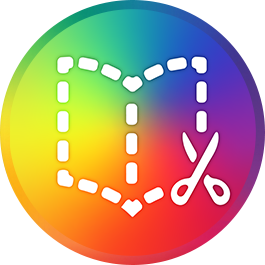
Bookcreator is a digital book creation tool with a wide range of features. Students can be added to a shared course 'library' using a unique code, enabling academic staff to access all the books created within the course. The book design process encourages students to critically select and organise information, plan content, and make creative decisions.
Students can use Bookcreator to develop a course portfolio in the form of a book, summarising what they have learned during the course or semester, or creating summary materials on topics covered in the course.
* Before creating their first book, students are advised to watch a Bookcreator tutorial video that explains the main features of the tool.
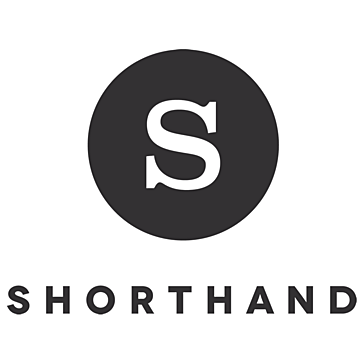
Shorthand is a digital storytelling platform that employs a variety of visual storytelling and organisation techniques. It enables users—regardless of their experience with creating visual material in a digital environment—to produce interactive stories that are accessible across all types of devices, including computers, tablets, and mobile devices.
The content created on Shorthand is presented as a single web page, which can include text, interactive elements, graphics, and images. The platform also provides a variety of examples showcasing the wide range of content rendering features available.

MindMeister is a web-based mind mapping software that operates in any standard web browser. The mind maps you create are saved automatically and are accessible from anywhere as long as you are connected to the internet. This tool helps students visually represent their thought processes and organise the content they are studying in a course or topic. The software is suitable for on-site, remote, and hybrid learning. The basic package allows users to create up to three free mind maps.
Mind maps can be used for a variety of purposes in the learning process and support self-directed learning:
- Analysing literature: Mind maps can schematically represent the main points or, for example, summaries of each chapter of a book.
- Presenting learning outcomes: Students can list, either individually or in groups, the key points or terms they have learned in the course. The lecturer can then assess the students' readiness for assessments, such as final exams.
- Group work: Students can collaborate to research, take notes, and summarise material on a particular topic. The mind map can also be used for presenting group work.
Digital tools for visual study materials
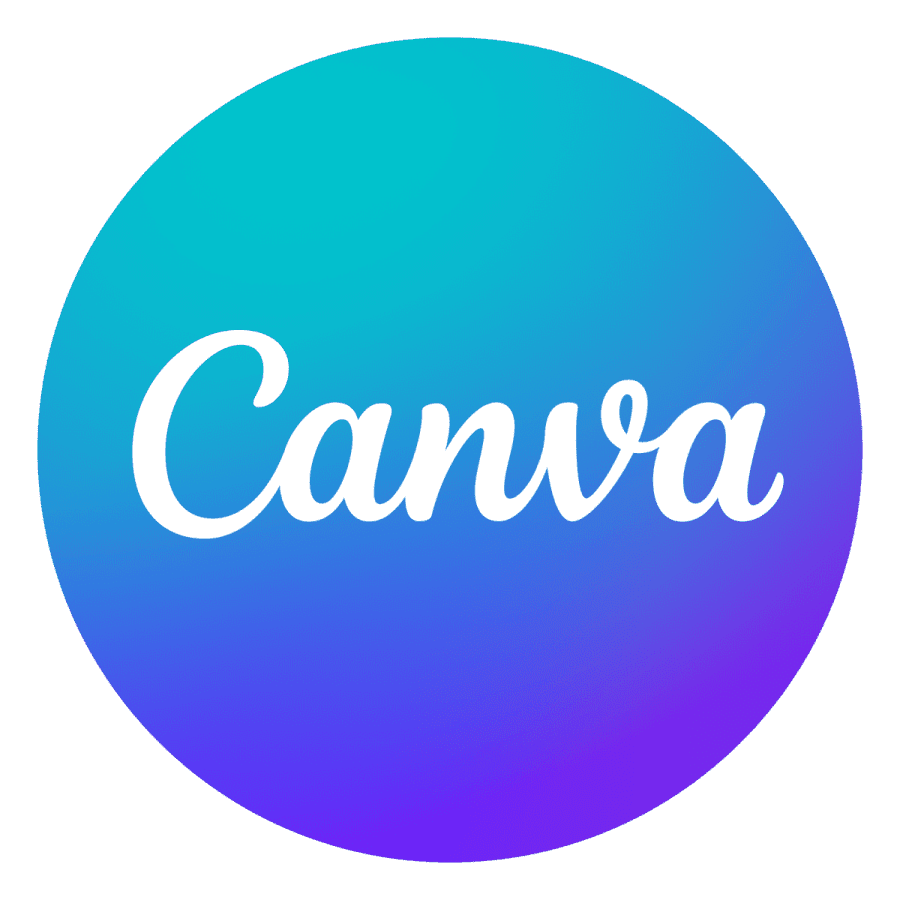
Canva is an online tool for creating a variety of visual materials, including infographics, posters, business cards, videos, CVs, presentations, and more. The tool offers a library of templates and various visualisation elements, enabling users to design professional-looking materials. Canva allows multiple users to share and collaborate on the same project.
The free account includes access to an extensive media library, the ability to share materials with other users, and 5 GB of storage.

Infogram is an easy-to-use and quick-to-learn online tool for creating infographics. It offers templates for infographics, posters, presentations, and reports, as well as the option to create your own materials by inserting icons, images, stickers, GIFs, videos, and animations from free media libraries. Users can upload their own Excel files, and Infogram will automatically turn the data into easy-to-read, colourful charts.
The tool is available in a free (Basic) package, which includes a limited number of templates and allows the creation of up to 10 projects. Note that projects created with the free version are publicly available.

Piktochart is an intuitive and easy-to-learn online tool for creating infographics, posters, presentations, leaflets, and social media messages. The tool offers a variety of templates that can be easily customised to suit your needs.
Piktochart provides a free account with limited downloads and templates. A paid plan is available, offering unlimited visuals, templates, downloads, and the ability to use custom colours and fonts, as well as save your own templates.
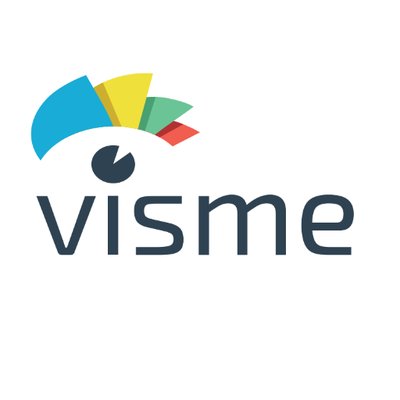
Visme is an online tool for creating infographics, presentations, graphics, videos, and GIFs. The tool offers an extensive library of templates for various media files, which can be easily edited and enhanced with visual effects and animations.
Visme provides free account registration, offering 100MB of storage, a limited number of templates, and the ability to download projects as JPG files. Note that projects created in the free version are publicly available.
Generative AI tools
Generative AI tools offer valuable support to academic staff in various aspects of the study process:
- Planning the Study Process: AI can help generate thematic plans and course structures, and assist in formulating learning outcomes.
- Generating Study Materials and Content: AI can create the content and structure of specific lectures, classes, presentations, tests, and other materials based on existing teaching materials or a thematic outline provided by the academic staff.
- Changing the Form and Format of Learning Content: AI tools can convert video content into informative text and offer test questions, or create videos from existing text.
- Automated Assessment: AI can provide an initial assessment of students' work, offering a preliminary evaluation before in-depth analysis by the academic staff.
General-purpose chatbots
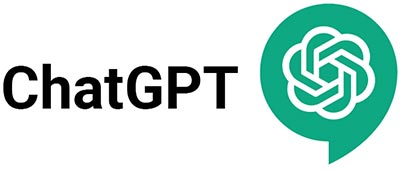
OpenAI’s ChatGPT is renowned for its ability to answer a broad range of questions, simulate discussions, draft emails, assist with content and structure, and offer descriptive feedback on completed texts or content. Its ability to understand and generate human-like text makes it a versatile tool for various purposes. The paid version allows users to upload images, request descriptions, modify details, or use them for inspiration in text and code generation (e.g., suggesting website design images).
The ChatGPT 4 model is also available via the Microsoft Copilot interface, though it operates only in ‘Creative’ or ‘Precise’ mode. In ‘Balanced’ mode, Microsoft Copilot uses the ChatGPT 3.5 model.
ChatGPT can be used to assist students by answering questions, drafting emails, advising on lecture and lesson planning, generating test questions based on specific content, and explaining complex terms and concepts.
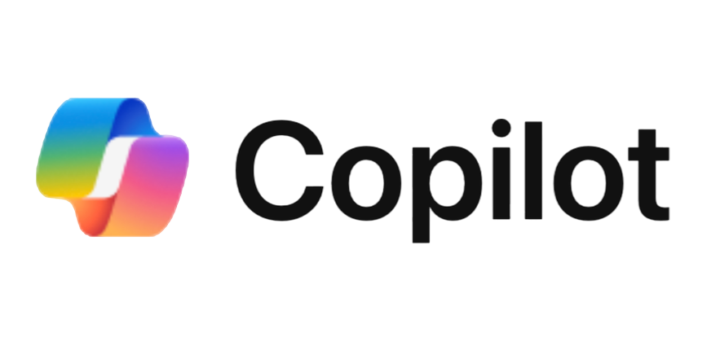
Microsoft Copilot is an AI productivity tool integrated into Microsoft Office 365, designed to streamline the creation of content, including emails, reports, and presentations. It automates everyday tasks and generates content in the required formats within Microsoft Office applications. Copilot offers valuable support for creating course content and administrative documents, such as generating PowerPoint presentations, analysing data in Excel, and writing content in Word.
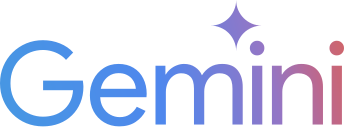
Gemini is a chat-like generative intelligence tool with web browsing capabilities. It provides accurate and timely answers by leveraging Google's extensive data resources. Gemini can reason in the context of current events and navigate various topics to offer nuanced responses.
Image generation tools
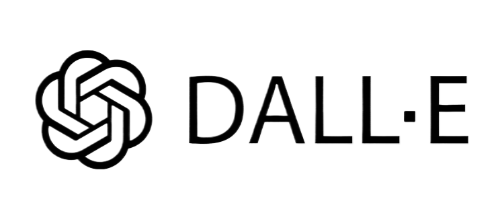
Dall-E is a generative intelligence image creation tool, available as a standalone service or as part of the paid ChatGPT service. It is popular for its ability to create detailed and imaginative images, transforming existing visuals into more creative versions. In addition to helping develop illustrations for teaching materials and presentations, Dall-E can also turn abstract concepts into visual representations, giving them clearer meaning.

Midjourney is a generative intelligence tool focused on creating creative visual content, particularly in the fields of art and design. The tool excels in producing eye-catching images and realistic interpretations, making it ideal for artistic presentations, social media content, and other visual projects.
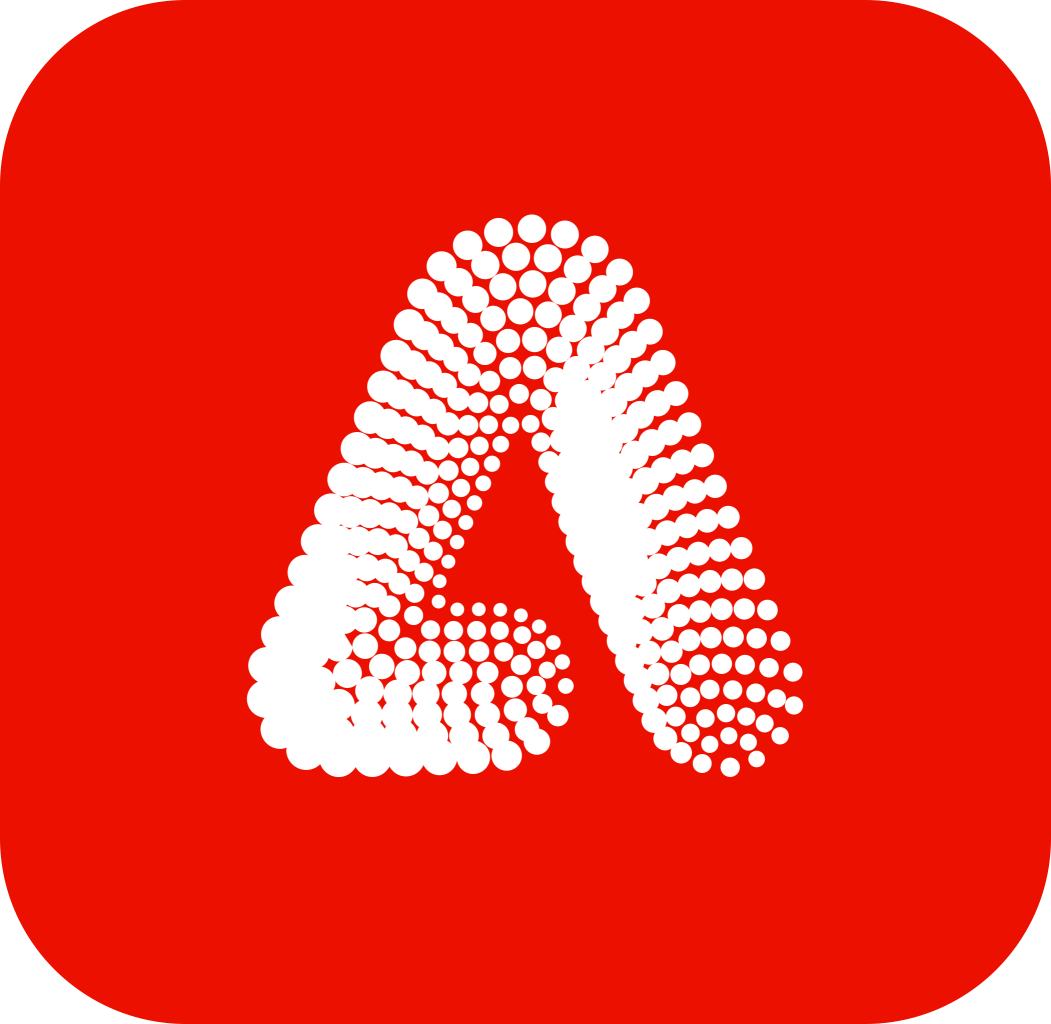
Adobe Firefly is a generative intelligence tool designed for the creation of high-quality, original images suitable for professional use. This tool enables academic staff to produce high-fidelity visuals, making it ideal for creating images for problem-solving exercises, case analysis, study materials, and presentations.
Video subtitling / transcription tools
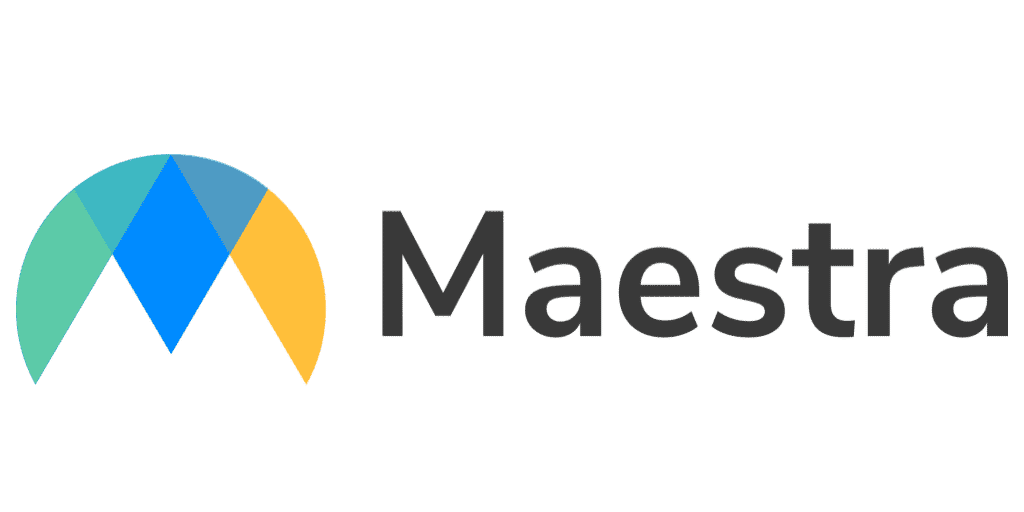
Mastera.AI is an automated tool for transcription, translation, subtitling, and voice-over of audio and video files. It supports more than 100 languages, making it ideal for creating multilingual content. The tool allows users to transcribe audio and video quickly, create multilingual subtitles, and even dub videos into another language. It includes features for editing transcriptions and translations before generating speech synthesis, ensuring accuracy. Mastera.AI is especially useful for educational content, making lectures and videos more accessible to a global audience. It is also valuable for language learning courses and creating multilingual educational materials.

OpenAI Whisper is a highly accurate audio transcription tool capable of converting spoken audio into text. It supports multiple languages, including Latvian, and is available for free. However, Whisper is not a cloud-based service, requiring installation on a local computer. Users must have basic knowledge of Python to set up the platform. Having Whisper installed locally ensures better data confidentiality and provides more control over the transcription process. It is particularly useful for generating accurate captions for oral presentations, making it easier for students to review and search lecture content. Whisper also aids in supporting students with special learning needs, providing transcription for language courses, and assisting in qualitative research analysis by transcribing interviews and spoken content.

YouTube allows users to add subtitles to videos after they have been uploaded to the platform. Subtitles can be manually entered in Latvian, offering a straightforward and user-friendly option. Once subtitles are added, the video can be downloaded along with them. This feature expands accessibility by reaching a broader audience, including deaf and hard-of-hearing viewers, as well as those who speak different languages. Subtitles also provide the advantage of enabling viewers to watch the video in environments where headphones are not available.
Text-to-audio conversion tools
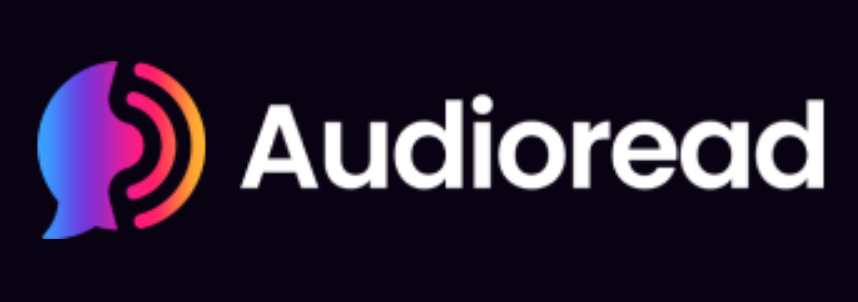
Audioread converts text (from PDF files and website content) into speech with a wide selection of voice options, including two voices in Latvian. It can process text up to 500,000 characters, with the conversion taking only a few minutes. This tool is ideal for creating audio versions of text-based learning materials, enhancing accessibility for students with diverse learning needs and disabilities.
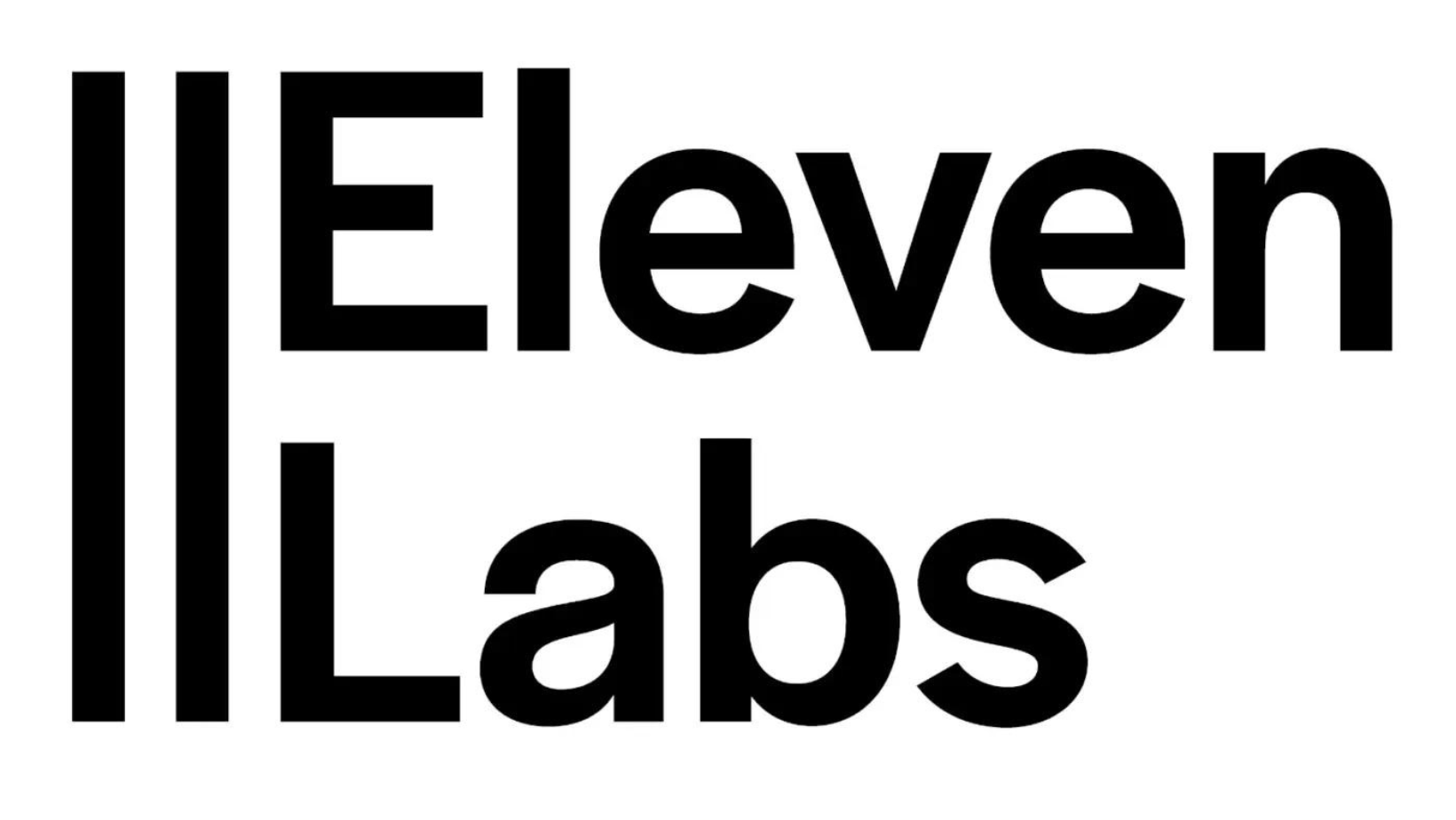
ElevenLabs.io enables the creation of realistic, natural-sounding voice recordings from written text. The tool synthesises human-like voices and offers a variety of voice options to suit the content's needs or the audience's preferences. Easy to use and requiring minimal technical expertise, it integrates smoothly into various educational platforms. It supports multiple languages and can even be trained to mimic a personal voice for text-to-speech conversion. ElevenLabs is particularly beneficial for converting text-based learning materials into audio, aiding students with visual impairments or reading difficulties. Additionally, it can be used in language courses to provide examples of spoken language in different accents and dialects, replacing robotic voices with more dynamic, natural speech.
Tools for planning, organising and assessing learning and teaching

Nolej facilitates the creation of microlearning materials by transforming basic content (videos, audio, and text) into interactive learning experiences such as interactive videos, self-assessments, games, and flashcards within minutes. This tool is particularly useful for developing small- or micro-learning content. Once the academic staff upload their learning materials, the generated interactive content can be downloaded in SCORM (Sharable Content Object Reference Model) or HTML5 (HyperText Markup Language version 5) formats and seamlessly integrated into the e-learning courses.
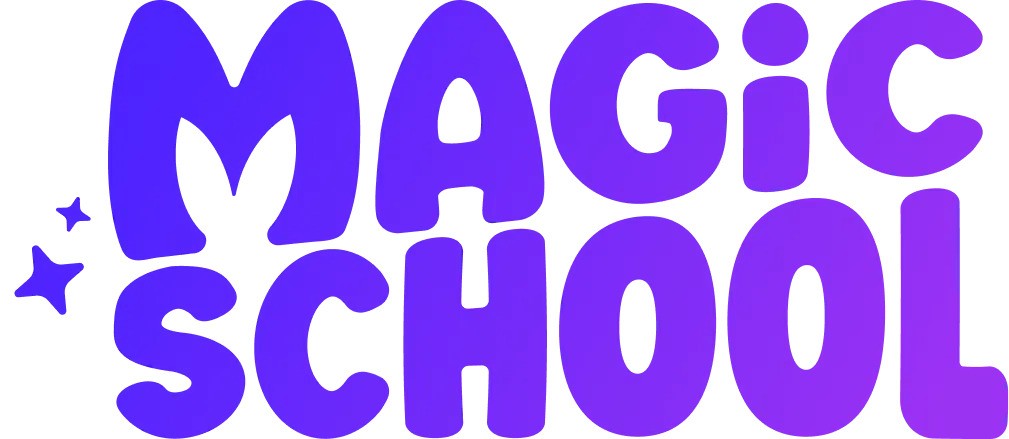
MagicSchool offers customised solutions for the creation of diverse learning content. The tool can generate detailed assessment rubrics, adapt reading material to various levels, and create texts based on specific concepts along with corresponding tests. One of its standout features is its comprehensive test creation functionality, allowing users to design multi-level assessments, multiple-choice tests, mathematical problems, comprehension tests, diagnostic tests, and more. This makes it a versatile tool for both content creation and evaluation in academic settings.
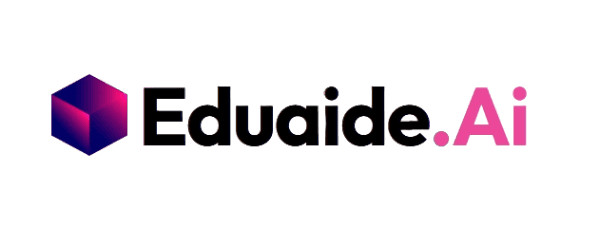
Eduaide provides a range of features aimed at supporting the study process. It helps with planning lectures and classes, designing the thematic framework of courses, and generating rubrics and sample essays to help students assess the quality of their own work. The tool also facilitates the creation of gamification activities and tests based on Bloom's Taxonomy, making it suitable for interactive and assessment-based learning. Additionally, Eduaide includes a feedback section where students can upload essays (up to 5000 words) and receive analysis on aspects such as spelling, logical coherence, theoretical soundness, and the presentation of ideas. The tool can analyse essays written in Latvian, though the feedback will be provided in English, offering valuable insights for improving students' writing.
Tools for text production and research

Grammarly is a tool that provides comprehensive proofreading for grammar, style, and tone, while also offering suggestions for content improvement. The paid version includes an originality check to ensure text authenticity. It provides real-time corrections for texts in various formats, along with feedback on text quality and suggestions for enhancing clarity and coherence. Additionally, Grammarly can help generate more content using the same language model as ChatGPT. This tool is highly beneficial for both academic staff and students, assisting with the refinement of English-language texts, including research papers, essays, emails, study materials, and more.

ResearchRabbit is a tool designed for academic publication searches, helping users find contextually and thematically related research articles. It offers a visual mapping feature that illustrates the connections between the literature found, allowing users to create multiple thematic research groups. Users can also add their own basic literature and discover complementary publications relevant to these areas. This tool is useful for both students and academic staff, facilitating the literature selection process in various research tasks. It can also assist academic staff in staying up to date with the latest literature, aiding in the regular updating of course content.

SciSpace leverages AI to help users understand and find relationships between scientific publications, making it an invaluable tool for literature analysis. The platform supports users throughout the entire literature analysis process, from identifying relevant studies to interpreting scientific literature results. Key features include:
- Literature search based on research questions, rather than relying solely on keywords.
- Scanning of existing collections of scientific articles (PDF files) to analyse information.
- The ability to provide a single PDF file containing relevant literature and explanations of concepts.
- Support for scientific writing, including paraphrasing and identifying the use of AI solutions.
SciSpace also clearly cites the sources of information, ensuring transparency in its recommendations and findings.
Digital visual and audio libraries
Digital visual and audio libraries are an essential resource for academic staff, providing access to high-quality images, videos, and icons that can complement study materials and presentations. By using open-source and appropriately licensed materials available on the platforms below, academic staff can be confident they are respecting copyright and using creative resources legally.
- Free image and video libraries

Pexels is a free photo and video platform that provides high-quality visuals, perfect for developing presentations, study materials, and visual aids. The platform offers access to hundreds of thousands of free photos and videos, with new high-resolution images added daily. All content on Pexels is licensed under the Pexels licence, ensuring that academic staff can confidently use the resources in their materials while respecting copyright regulations.

Unsplash is a platform for a community of talented professionals, hobbyists, and other photography enthusiasts. Every user has access to more than 3 million photos offered under the Unsplash licence, free of charge and without registration. This allows users to download and use photos for both commercial and non-commercial purposes, with no permission required (although crediting the author of the image is highly recommended).

Vecteezy is a platform that offers millions of free vector graphics collected by artists from all over the world. With such a large community of vector designers, Vecteezy adds new content every day, offering high-quality free photos, vector graphics, and videos. The platform has no limit on the number of downloads per day, but registered users can download files much faster than non-registered users. Vecteezy has four types of licences that allow you to use the material in different ways and for different purposes. Most of the material is available under a standard licence, which means it can be used for both commercial and non-commercial purposes, provided that the author is credited.
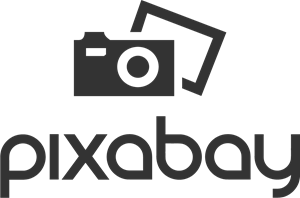
Pixabay is a vibrant community of creative individuals who collect images, videos, and audio files. All content is published under a Creative Commons (CC0) licence, which makes it safe to use the material without asking for permission or crediting the author — even for commercial purposes.
- Free icon libraries

Reshot is a curated library of free images, icons, and vector graphics. The material is free to use for commercial purposes and can be edited without requiring credit or permission from the author.

Freepik is one of the largest free platforms for graphic resources, including vector graphics, images, and icons. It offers more than 5 million graphics, 40% of which are available for free or for a reasonable annual subscription fee.
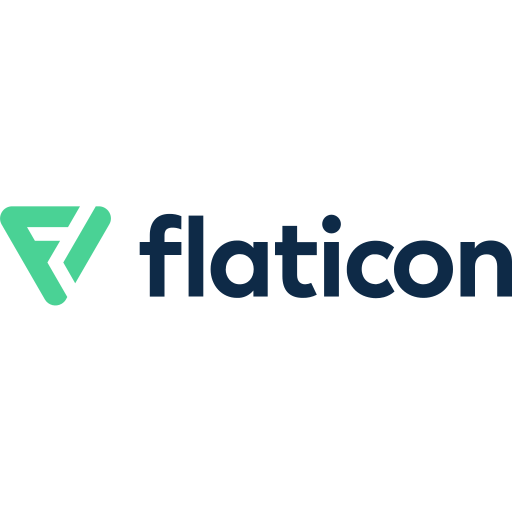
Flaticon is the world's largest database of free, customisable icons and illustrations. It offers over a million icons and illustrations in various formats for all types of projects, including presentations, websites, catalogues, and infographics. Icons can be downloaded in different formats (SVG, EPS, PNG, PSD, Webfont) and can be customised by adjusting their width, colour, and size.

Iconfinder offers unique, high-quality icons and illustrations to enrich visual content and enhance user experience. Users can efficiently search, filter, and download content. Downloads and copies are permitted for personal use only, subject to copyright and other terms specified in the content description.
Regulatory framework
Working within the regulatory framework is essential to ensuring the quality and coherence of higher education. RSU operates within Latvian higher education policy, as well as international standards and guidelines, which provide clear frameworks and requirements that promote academic integrity, quality assurance, and transparency in the study process.
Higher education policy in Latvia and RSU
Laws and regulations governing higher education policy and the activities of RSU
Higher education policy makers in Latvia
Higher education policy in Europe
- EHEA – Information on current developments in the European Higher Education Area
- ESG – Standards and guidelines for quality assurance in the European Higher Education Area
- ECTS – European Credit Transfer and Accumulation System
- Opening up Education – Support framework for higher education institutions
Continuing education for academic staff
Training offered by the Centre for Educational Growth
Each semester, the Centre for Educational Growth offers around 170 academic hours of continuing education courses of varying content and scope, covering the following thematic blocks:
- Education – Student-centred learning and teaching in higher education, educational leadership.
- Technology-enhanced learning and teaching – E-learning environments, educational technologies, digital transformation, artificial intelligence, etc.
- Research – Methodology, scientific literature analysis, science communication, support for student research, etc.
- Transversal skills – Academic ethics, strengthening the culture of academic integrity, communication, collaboration, leadership and innovation skills, ability to think and work in an interdisciplinary, research and data-driven way, etc.
The training remains relevant because its content is tailored to RSU’s specific context and the needs of academic staff, rather than being standardised or broadly applied.
Academic staff can apply for the latest courses organised by the Centre for Educational Growth through RSU’s e-learning environment and academic portal.
View the list of current activities and apply
Online continuing education courses
Online courses allow academic staff to develop and enhance their pedagogical skills by exploring areas of specific interest. Courses on teaching and learning methods, assessment, digital solutions for improving the learning process, and educational innovation—both in Latvia and internationally—offer valuable insights into current best practices and advancements in higher education.
Training courses on educational topics developed in Latvia
RSU Professional Development Programmes – RSU Mūžizglītības centrā pieejams plašs mācību piedāvājums medicīnas, veselības aprūpes un sociālo zinātņu jomās.
OpenMinded – Online lectures by various experts.
Online course developed as part of the project ‘Supporting higher education institutions to develop innovative policies and practices for integrating inclusive practices in designing and teaching courses – Covers inclusive education and design principles, providing practical strategies to reduce discrimination and utilise digital solutions to support students.
Worldwide training courses on educational topics
Teaching and learning
- University Teaching (Coursera) – A free online course by Dr Lily Min Zeng, Associate Professor at the University of Hong Kong (ranked 35th in the 2024 QS World University Rankings), with over 18 years of experience in undergraduate teaching. The course covers general topics in higher education pedagogy, including structuring course descriptions, formulating learning outcomes, planning student assessment, selecting appropriate teaching methods, and evaluating teaching effectiveness.
- Uncommon Sense Teaching (Coursera) – A free online course taught by three experts from the US, offering insights into learning and teaching through the lens of neuroscience. The course explores learners' cognitive processes and provides practical strategies for effective teaching. Topics include the role of active learning, student motivation, improved learning outcomes, and fostering inclusivity in higher education.
- An Introduction to Evidence-Based Undergraduate STEM Teaching (EdX) – A free online course examining key aspects of learning and teaching, such as factors influencing student learning, formulating learning outcomes, assessing knowledge, and applying active and inclusive teaching methods. Delivered by faculty from prestigious U.S. universities, the course shares insights into planning, leading, and structuring effective courses.
- Inclusive Teaching: Supporting All Students in the College Classroom (EdX) – A free online course led by representatives from Columbia University (ranked 17th in the 2024 QS World University Rankings), focusing on the principles and implementation of inclusive education. Topics include creating equitable learning environments, designing accessible and inclusive learning processes, planning assessments, and selecting appropriate teaching materials.
- Blended Learning: Personalizing Education for Students (Coursera) – A free online course exploring the benefits of blended learning in fostering inclusive education. The course highlights challenges academic staff may face when transitioning to a blended learning model and offers practical solutions to ease the shift for both students and educators. While the course primarily focuses on general education, it provides a theoretical and practical framework for using blended learning to personalise student support.
Assessment
- Assessment in Higher Education: Professional Development for Teachers (Coursera) – A free online course led by six lecturers from Erasmus University Rotterdam (ranked 99th in the 2024 QS World University Rankings). The course provides comprehensive support for academic staff in planning, implementing, evaluating, and improving assessment in higher education.
Digital solutions for improving the study process
- Learning to Teach Online (Coursera) – A free online course led by a team of academic staff from the University of New South Wales (ranked 84th in the 2024 QS World University Rankings). The course explores the key principles of effective online teaching. Those who purchase the extended version gain the opportunity to practically design online learning activities, develop study materials, and assess their effectiveness.
- Online Learning Design for Educators Specialization (Coursera) – This course highlights the growing importance of online learning in higher education, not just for its cost-effectiveness and ability to reach larger student groups, but also for its potential to enhance learning efficiency. Led by three teaching and learning experts from Macquarie University (ranked 180th in the 2024 QS World University Rankings), the course focuses on active student engagement and offers participants the chance to design their own Zoom lesson based on the principles learned.
- Artificial Intelligence (AI) Education for Teachers (Coursera) – A free online course taught by experts from Macquarie University (ranked 180th in the 2024 QS World University Rankings). The course provides a foundational understanding of artificial intelligence (AI) and its applications in education. Participants explore AI’s history, its comparison to human intelligence, and its current uses across various sectors. The course also addresses critical thinking, design thinking, and ethical concerns such as fairness, transparency, and privacy. Academic staff will learn how to integrate AI-related skills into their courses, equipping students for the challenges and opportunities of the AI era.
Innovation in education
- New Learning: Principles and Patterns of Pedagogy (Coursera) – A free online course led by experts from the University of Illinois, Urbana-Champaign (ranked 42nd in the 2024 QS World University Rankings). The course explores contemporary learning needs in the context of social and technological change. Participants will examine three pedagogical paradigms—didactic, authentic, and transformative learning—and their implications for modern education.
- Design Thinking for Innovation (Coursera) – A free online course introducing the fundamentals of design thinking as a tool for sustainable and effective innovation across various sectors. Participants will gain hands-on experience in developing and refining an innovation of personal relevance, using the design thinking methods and techniques presented in the course.
